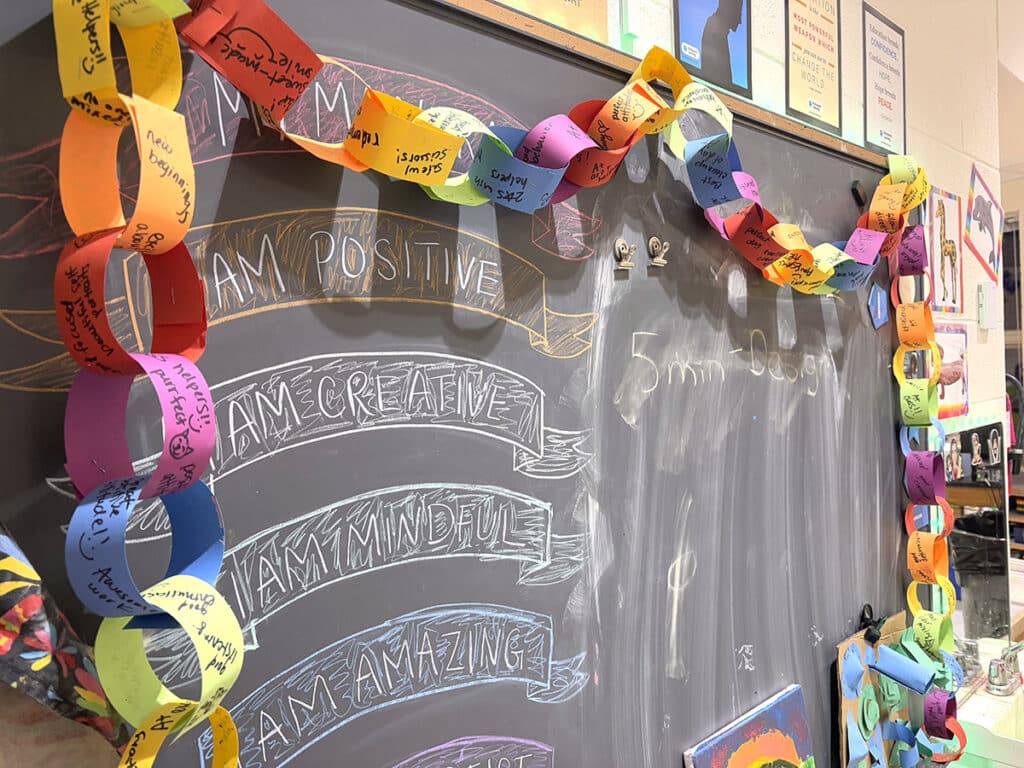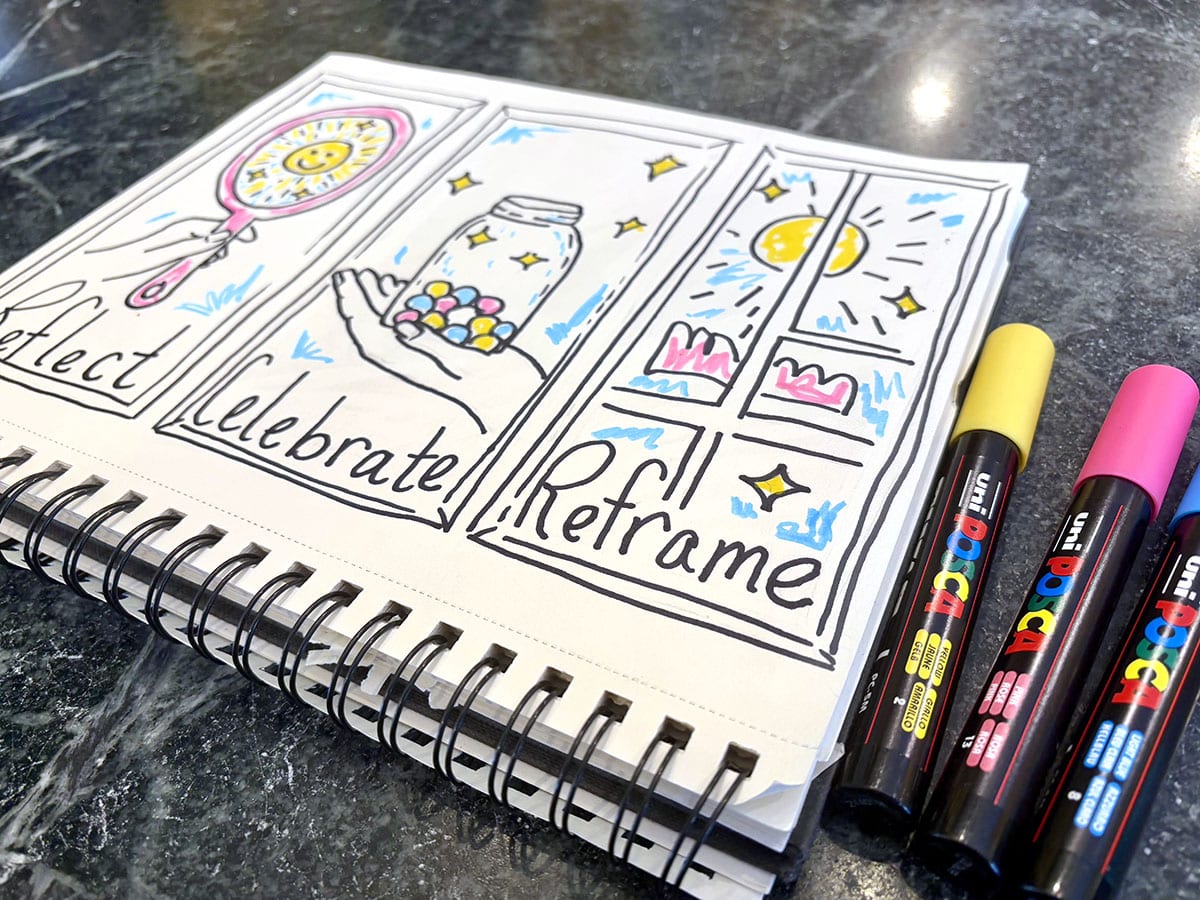It’s Clay Week, and you’re up to your elbows in mud. Grades are due, the kiln is acting up, and the supply closet is running low on essentials. The demands seem never-ending, and it’s easy to focus on everything going wrong. What if you could approach these challenges with an asset-based mindset, focusing on progress and possibilities instead of problems?

Focusing on problems, what’s missing, and what needs fixing is a way of thinking called a deficit lens. It’s a natural tendency, thanks to something called negativity bias. While it helped our ancestors avoid danger, it can leave teachers feeling stressed and burned out, the top two reasons why 8% of educators leave the profession.
An asset-based lens offers a solution! Instead of focusing on problems, it encourages us to see strengths, opportunities, and what’s already working. It even boosts mental health and personal satisfaction! Even in a chaotic Clay Week, this mindset helps you notice progress, celebrate wins, and find growth in the challenges.

Shifting to an asset-based mindset can be as easy as: Reflect, Celebrate, and Reframe!
Reflect on what’s already working.
One of the most powerful ways to shift your mindset is to recognize what’s already working. This doesn’t mean ignoring challenges, but balancing them with an appreciation for strengths and successes. Take a moment each day to reflect on small victories. Maybe it’s a student who finally mastered a tricky technique, or the joy on students’ faces as they explore clay for the first time.
Keep a positive paper chain in your classroom to record all of your small victories. Prepare strips of paper and record one positive thing you see in the classroom each day before you leave. Maybe it’s a great clean-up effort from your most challenging class or a student who is pushing their creative boundaries. At the end of the week, you’ll have a nice paper chain! Over time, this chain will serve as a powerful visual reminder of the good happening in your classroom, even during the busiest and most chaotic weeks.

Celebrate the progress you see in yourself and your students.
It’s easy to want things to be perfect now, but growth often comes in small steps. Instead of focusing on what isn’t done yet, celebrate progress to build excitement and collaboration as a class. It’s an intentional way to shift the culture of your classroom to one of rejoicing, encouragement, and motivation. One way you’re probably already doing this is through pre- and post-assessments.
To further reinforce this focus on growth, create a Progress Pebble Jar. Each time a student makes progress, whether it’s completing a challenging project, trying a new technique, or improving a specific skill, add a pebble or colorful token to the jar. Make the moment special by pausing to acknowledge the progress in front of the class and inviting the student to add their own pebble.
Here’s what a Progress Pebble Jar can look like in your art room:
- Share the specific achievement with the class. You announce, “Alex mastered blending colors today—let’s give him a cheer!”
- Allow the student to choose and place their pebble in the jar, symbolizing their contribution to the collective growth.
- Clap, cheer, or create a unique classroom tradition, like a “progress round of applause.”

Reframe challenges as opportunities for growth.
Challenges are inevitable, but how you view them can make all the difference. Reframing involves looking at difficulties as opportunities for growth or innovation. When the kiln breaks down, it may feel like a disaster! Ask yourself, “What’s one good thing about this challenge?” With a quick pause to reframe, you may discover that it’s a chance to explore air-dry clay, an opportunity to dive into kiln mechanics, or provide an “in” with the new ceramics teacher in the next town.
Use a Reflection Journal to process and reframe these moments. Each time you encounter a challenge, write it down. Record at least one good thing that can come out of the situation. Visit this journal often to pinpoint patterns of growth and resilience, and remind yourself how much you’ve learned!
Model reframing with your students, too. How many times has a student walked up to you and said, “I messed up! I need a new paper.”? Instead of handing them a fresh sheet, pause and ask them why they think they messed up and what they learned from their struggle. Prompt them to repeat out loud what they learned. For example, the student may conclude, “I think I messed up because I drew too small. I learned that I need to follow instructions to fill the page. One good thing from this is that I discovered I need to lean back from my artwork instead of hunching over it. I need to change my posture, which is probably best for me anyway.”

Reflecting, celebrating, and reframing aren’t just about surviving tough weeks—they’re about thriving all year. By following these three steps, you can transform your approach to teaching and the culture of your studio. Even during the messiest Clay Week, small shifts in perspective can uncover beauty in the chaos, fostering optimism, creativity, and resilience. Embracing an asset-based mindset allows you to focus on what truly matters, such as the connections you build, the progress you witness, and the growth that happens.
What are some small victories you can celebrate today?
How do you keep yourself fixed on the positive, especially when things are challenging?
To chat about an asset-based mindset with other art teachers, join us in The Art of Ed Community!
Magazine articles and podcasts are opinions of professional education contributors and do not necessarily represent the position of the Art of Education University (AOEU) or its academic offerings. Contributors use terms in the way they are most often talked about in the scope of their educational experiences.

دیدگاهتان را بنویسید